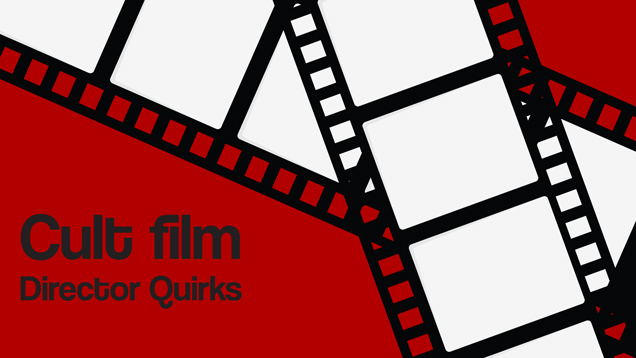Cult film: Director Quirks
 CREDIT: ALICIA MAK
CREDIT: ALICIA MAKSome directors have a style that's all their own. They develop it and make their name through paying extra attention to detail or by finding certain things they like to use and establishing a pattern.
Suspense director Alfred Hitchcock is an early example of this as he had a cameo appearance in 39 of his 52 major films. He became so well known for this that he began putting his cameoin the first half hour of the movie so not to distract audiences from the plot.
M. Night Shyamalan adopted this practice, and even had larger roles in some of his movies like Lady in The Water and Signs. Tim Burton has a distinct style that is usually dark and often cartoon-like. His first two movies were Pee Wee's Big Adventure and Beetlejuice, which have both become cult classics, and his take on the Batman franchise has become one of the highest grossing films of all time. A prominent part of his style is to have characters and backgrounds that are pale or dull, but have things like blood be extremely bright to contrast. This can be seen in movies like Sleepy Hollow and Sweeney Todd.
George A. Romero is known for his work in the zombie genre with films like Night of the Living Dead and Dawn of The Dead, as well as doing work with Stephen King on the Creepshow movies and his take on The Dark Half. Sam Raimi is another director known for his zombie movies, as director of the Evil Dead series. Raimi's style is different in that it is both comic and creepy.
Quentin Tarantino has made a name for himself through beginning his movies in medias res, which means in the middle of things. And then he jumps to different points in the story to explain how everything connects. Examples of this are the movies Reservoir Dogs and Pulp Fiction. Characters can also be seen carrying a brief case in many of his movies, and one camera angle that is common in his work is looking up out of a trunk. He's also known for the amount of blood and gore in his movies almost to a comical point in movies like the Kill Bill series, and has cameo appearances as well.
Stanley Kubrick is someone we don't hear a lot about, but films like 2001: A Space Odyssey and A Clockwork Orange have certainly developed a cult following. A common shot to see in his work is the one-point perspective, as well as tracking shots. The best examples of these can be seen in The Shining. His movies are normally divided into three acts that all have a particular tone and he's careful with choosing soundtrack music that adds to the tone in order to enhance the audience's experience.
Whether it's through a specific genre, using distinct camera angles, frequently working with the same actors, or composers for the soundtrack, directors try to set themselves apart. Some succeed in terms of commercial success, and others become known for B-movies and develop a cult following. Either way, in any art form the devil is in the details, so pay close attention.














